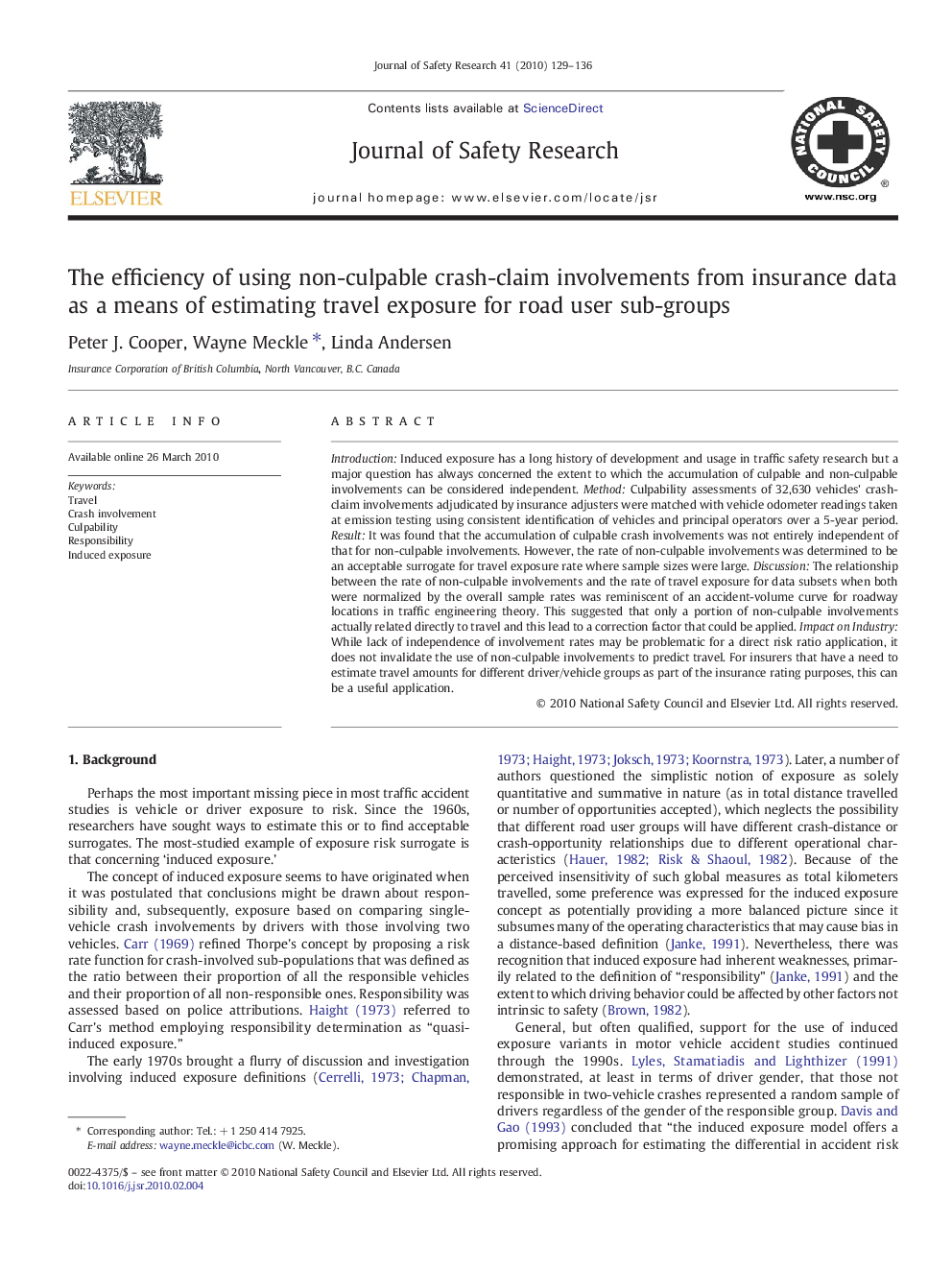| Article ID | Journal | Published Year | Pages | File Type |
|---|---|---|---|---|
| 587665 | Journal of Safety Research | 2010 | 8 Pages |
IntroductionInduced exposure has a long history of development and usage in traffic safety research but a major question has always concerned the extent to which the accumulation of culpable and non-culpable involvements can be considered independent.MethodCulpability assessments of 32,630 vehicles' crash-claim involvements adjudicated by insurance adjusters were matched with vehicle odometer readings taken at emission testing using consistent identification of vehicles and principal operators over a 5-year period.ResultIt was found that the accumulation of culpable crash involvements was not entirely independent of that for non-culpable involvements. However, the rate of non-culpable involvements was determined to be an acceptable surrogate for travel exposure rate where sample sizes were large.DiscussionThe relationship between the rate of non-culpable involvements and the rate of travel exposure for data subsets when both were normalized by the overall sample rates was reminiscent of an accident-volume curve for roadway locations in traffic engineering theory. This suggested that only a portion of non-culpable involvements actually related directly to travel and this lead to a correction factor that could be applied.Impact on IndustryWhile lack of independence of involvement rates may be problematic for a direct risk ratio application, it does not invalidate the use of non-culpable involvements to predict travel. For insurers that have a need to estimate travel amounts for different driver/vehicle groups as part of the insurance rating purposes, this can be a useful application.
